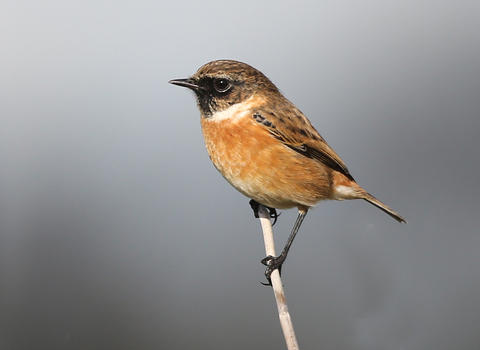
©Margaret Holland
Stonechat
The stonechat is named for its call, which sounds just like two small stones being hit together! It can be seen on heathland and boggy habitats.
Scientific name
Saxicola rubicolaWhen to see
January to DecemberSpecies information
Statistics
Length: 12cmWingspan: 20cm
Weight: 15g
Average lifespan: 4-5 years
Classified in the UK as Green under the Birds of Conservation Concern 5: the Red List for Birds (2021).
About
A small, dumpy chat, the stonechat is a little smaller than a robin. It has a big head and short tail. It can frequently be seen sitting on the top of gorse bushes, flicking its wings and making a call like two small stones being hit together. Stonechats inhabit heaths, bogs and conifer plantations. They eat invertebrates, seeds and fruit, such as blackberries.How to identify
Male stonechats have a black head, brown back, black throat with a white half-collar, and orange-red breast. Females and juveniles are paler. Darker than the similar whinchat, the stonechat does not have a pale eyestripe or pale patches at the base of the tail.Distribution
Resident on heathland throughout the country. Can also be found around the coast and at wetlands during the winter.Did you know?
On heathland in the south of England, Dartford warblers can often be seen following stonechats around, perhaps catching the small insects that the larger bird disturbs.Watch
Stonechat (https://vimeo.com/453686771)
Juvenile stonechat by Tom Hibbert
